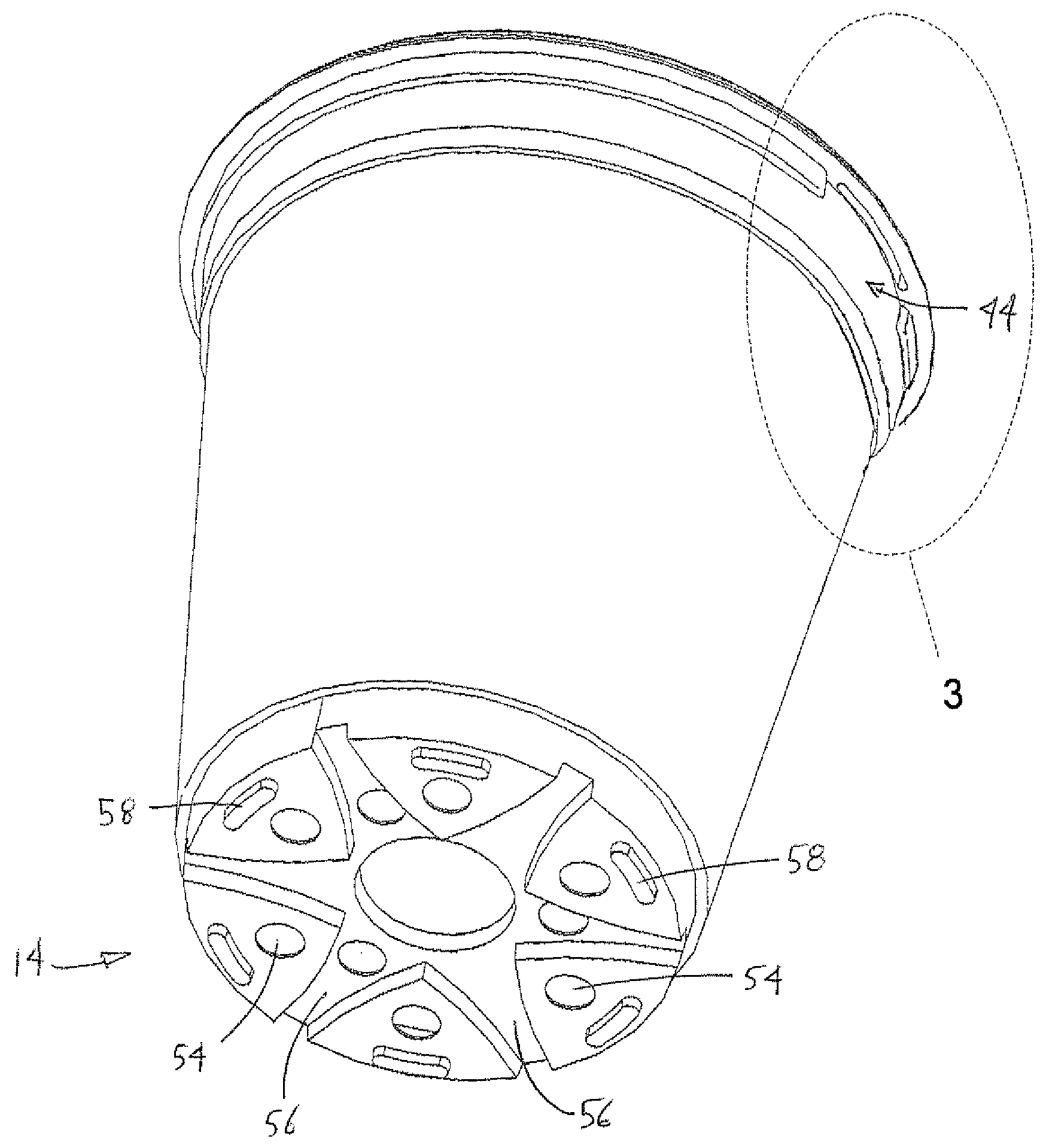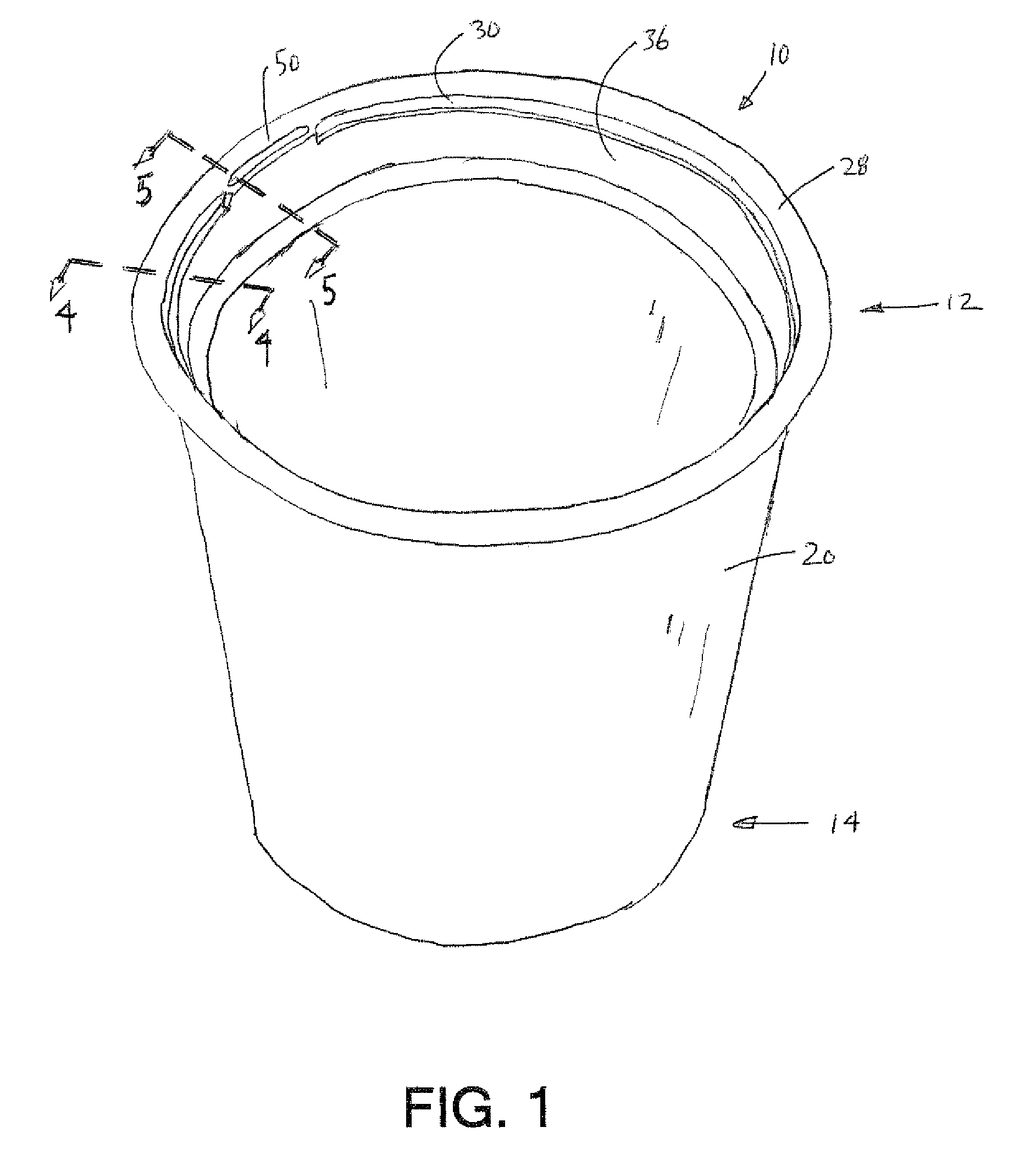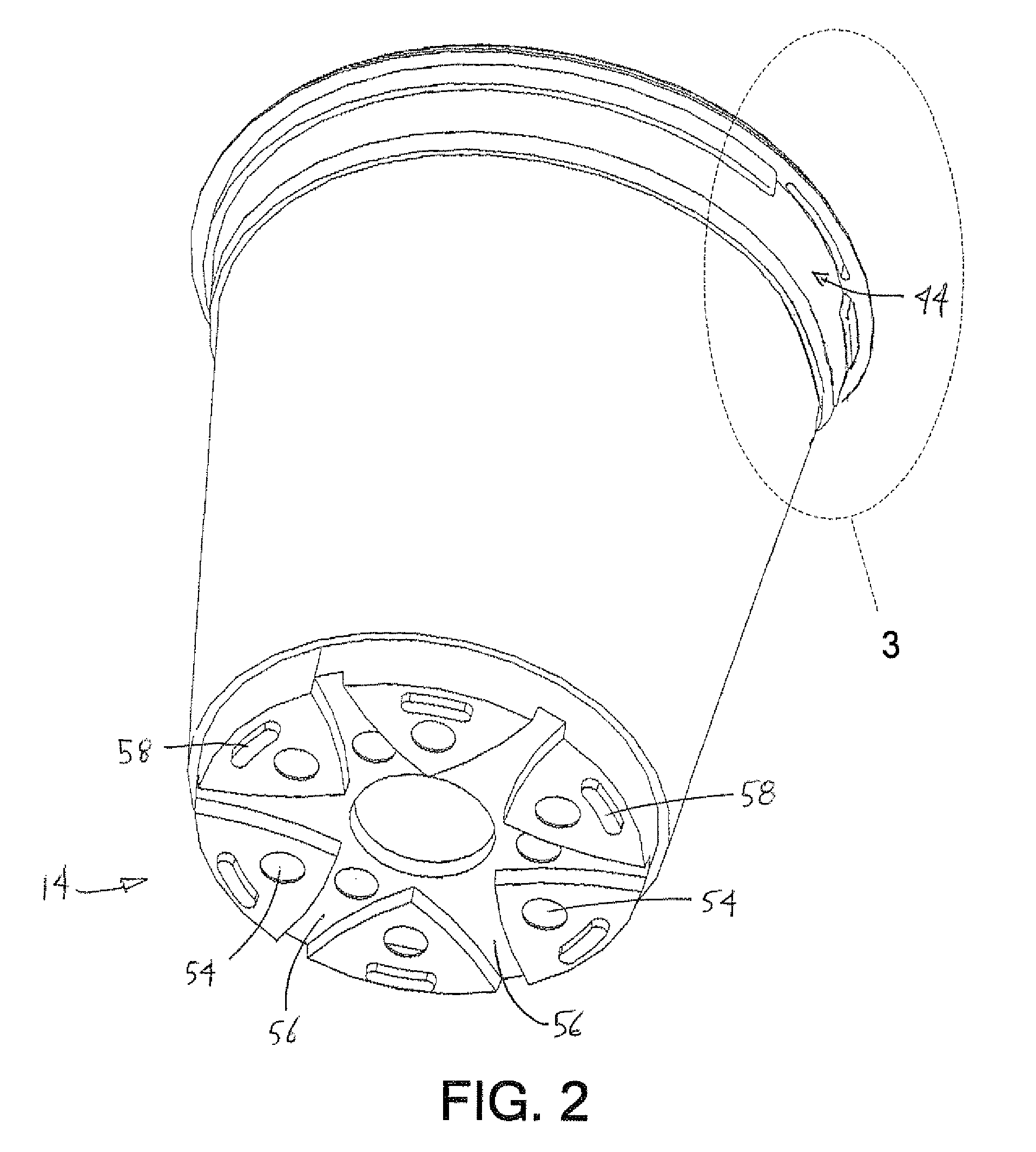Container with plant identification tag slot
a plant identification and container technology, applied in the field of containers with plant identification tag slots, can solve the problems of difficult use of slits, identification problems, and difficulty in knowing what type of plants are in the containers,
- Summary
- Abstract
- Description
- Claims
- Application Information
AI Technical Summary
Benefits of technology
Problems solved by technology
Method used
Image
Examples
Embodiment Construction
[0020]Referring now to FIGS. 1-3, one embodiment of a plant container of the present invention is shown. The plant container 10 has a substantially frustoconical shape having a top 12 and a bottom 14. The container top 12 is open, and the container bottom 14 is substantially closed, such that the container 10 is suitable for growing plants. In this description and in the appended claims, the term frustoconical describes a frustum, or the portion of a substantially conical shape between two parallel planes extending through or cutting through the shape. The frustoconical shape tapers according to a draft angle.
[0021]The container 10 comprises a sidewall 20, the bottom 14, and a lip 28. Between the sidewall 20 and the lip 28 is at least one nesting step. In the embodiment of FIGS. 1-3, two nesting steps are shown, but only one may be necessary. Adjacent to the lip 28 is a first nesting step 30 having a frustoconical first step wall 32 and a horizontally extending first step ledge 34a,...
PUM
 Login to View More
Login to View More Abstract
Description
Claims
Application Information
 Login to View More
Login to View More - R&D
- Intellectual Property
- Life Sciences
- Materials
- Tech Scout
- Unparalleled Data Quality
- Higher Quality Content
- 60% Fewer Hallucinations
Browse by: Latest US Patents, China's latest patents, Technical Efficacy Thesaurus, Application Domain, Technology Topic, Popular Technical Reports.
© 2025 PatSnap. All rights reserved.Legal|Privacy policy|Modern Slavery Act Transparency Statement|Sitemap|About US| Contact US: help@patsnap.com



